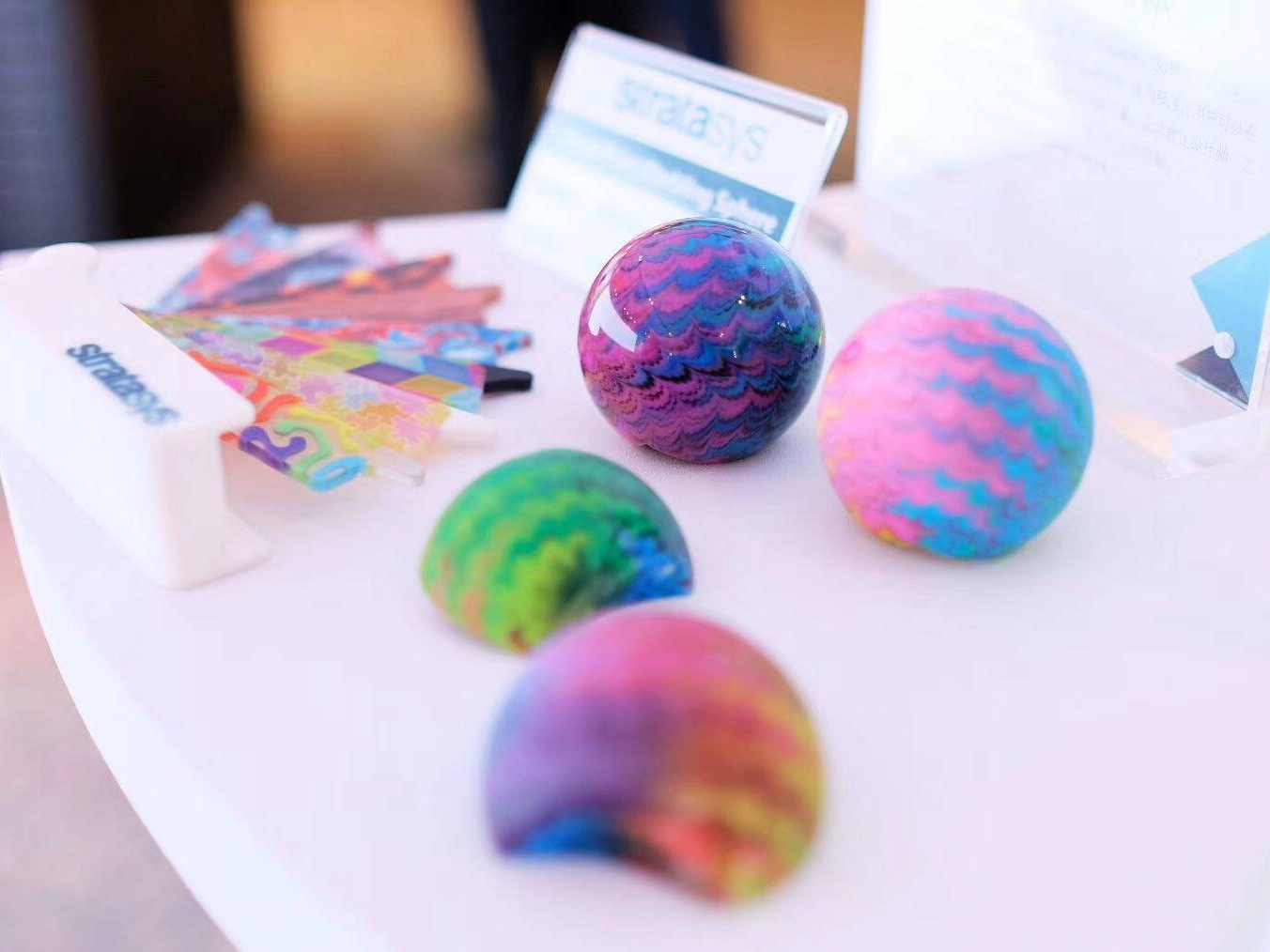What Is PolyJet 3D Printing?
Introduction
PolyJet 3D printing is an advanced additive manufacturing method renowned for exceptional surface finish, fine detail resolution, and the unique ability to combine multiple materials in a single build. By precisely jetting UV-curable resins layer-by-layer and instantly curing them, PolyJet achieves accuracy down to 16 microns. This makes it ideal for highly detailed prototypes and realistic medical models, surpassing conventional techniques such as CNC machining or injection molding, especially for complex, multi-material applications.
At Neway, PolyJet enhances our industrial 3D printing services by rapidly delivering prototypes with superior aesthetics and precision, significantly accelerating product development cycles across multiple industries.
How PolyJet Works: Process Principles
The PolyJet process involves three precise stages: material jetting, UV curing, and support removal. First, micro-droplets of liquid photopolymer resins are accurately jetted onto the build platform via high-resolution print heads, creating ultra-thin layers. Next, each resin layer is instantly solidified by UV lamps, ensuring exceptional dimensional stability and surface smoothness. Finally, soluble or gel-like supports are easily removed post-build, preserving intricate features and complex geometries impossible with traditional methods like FDM or SLS.
Common PolyJet Materials
PolyJet 3D printing excels with photopolymer resins engineered for specific mechanical properties and aesthetic characteristics. Below are key materials supported by Neway’s manufacturing workflows:
Material | Tensile Strength | HDT @ 0.45MPa | Key Properties | Common Applications |
|---|---|---|---|---|
50–65 MPa | 50–60°C | Clear, excellent dimensional accuracy | Optical lenses, transparent housings | |
60 MPa | 50°C | Rigid, smooth finish | Prototypes, detailed consumer models | |
2.4 MPa | 45°C | High flexibility, tear-resistant | Seals, gaskets, wearable prototypes | |
65 MPa | 58°C | High toughness, impact-resistant | Functional prototypes, snap-fit parts |
Key Technical Features of PolyJet 3D Printing
PolyJet stands apart from other additive technologies through superior detail resolution, multi-material capability, and exceptional surface quality. Below are essential technical specifications validated by ISO/ASTM testing standards and practical industry applications:
Precision & Resolution
Layer Thickness: As fine as 16 microns (0.016 mm), enabling microscopic detailing and ultra-smooth surfaces.
Dimensional Accuracy: ±0.1 mm (ISO 2768), surpassing typical FDM accuracy (±0.5 mm) and SLS accuracy (±0.3 mm).
Minimum Feature Size: Features down to 0.1 mm, ideal for microfluidics, electronic enclosures, and precision molds.
Mechanical Performance
Tensile Strength: Consistent across X/Y axes (~65 MPa, VeroWhitePlus, ASTM D638).
Elongation at Break: Flexible resins achieve >220% elongation, ideal for elastomeric prototypes.
Thermal Stability: Moderate heat deflection temperatures (~58°C for Digital ABS Plus, ASTM D648), suited for functional testing at moderate temperatures.
Production Efficiency
Rapid Build Speeds: Typically 10–20 mm/hour vertical print speed; small-scale parts completed in 2–6 hours.
Multi-material Printing: Combines rigid, transparent, and flexible resins in a single build, producing multi-property parts without assembly.
Post-processing Ease: Minimal manual finishing, with water-soluble supports significantly reducing post-processing time by 50% compared to traditional methods.
Surface & Aesthetic Quality
Surface Roughness: Ra <1 μm as-printed, significantly superior to FDM (Ra ~10–30 μm) and comparable to injection molding (Ra 0.4–0.8 μm).
Full-color Capability: Over 500,000 color variations are achievable directly during printing without painting or dyeing, ensuring accurate product prototyping.
Core Advantages Over Conventional Methods
Small-Batch Economics: PolyJet eliminates tooling costs, reducing per-part expenses by approximately 50% compared to CNC machining, particularly for complex geometries or intricate features.
Material Utilization: PolyJet achieves nearly 100% material utilization, significantly reducing waste compared to CNC machining’s 60–80% material waste.
Topology Optimization: Enables intricate lattice structures, achieving up to 80% weight reduction while maintaining mechanical performance (e.g., tensile strength of 65 MPa for Digital ABS Plus).
Assembly Consolidation: Combines multi-component assemblies into single PolyJet units, reducing component count by up to 70% in automation systems and other integrated assemblies.
Rapid Iteration: Delivers functional prototypes from CAD files within 8–24 hours, considerably faster than CNC machining (typically 5–15 days for programming and machining).
Parallel Scaling: Can simultaneously print multiple unique components within a single build cycle, ideal for rapid validation in medical device trials or consumer product iterations.
Isotropic Properties: Offers consistent mechanical properties across all print axes, maintaining tensile strength variation under 5%, outperforming the 15–30% variation common in FDM processes.
Chemical Resistance: Resins such as Agilus30 maintain greater than 90% elongation after prolonged chemical exposure (500 hours per ASTM D543), suitable for harsh chemical environments, including oil and gas applications.
PolyJet vs. CNC Machining vs. Injection Molding: Manufacturing Process Comparison
Manufacturing Process | Lead Time | Surface Roughness | Geometric Complexity | Minimum Feature Size | Scalability |
|---|---|---|---|---|---|
PolyJet 3D Printing | 2–12 hours (Direct from CAD, no tooling) | Ra <1 μm | ✅ High complexity, internal channels, thin walls | 0.1 mm (fine textures, holes) | 1–500 units (ideal for rapid validation) |
CNC Machining | 3–7 days (Programming + fixturing) | Ra 1.6–3.2 μm | ❌ Limited complexity due to tool access | 0.5 mm (smallest tool size) | 10–500 units (costly at higher quantities) |
Injection Molding | 4–8 weeks (Tool fabrication required) | Ra 0.4–0.8 μm | ❌ Requires draft angles, uniform walls, no undercuts | 0.2 mm (complex molds required) | >10,000 units (economical at scale only) |
Industry-Specific PolyJet Applications
Medical & Dental: Surgical planning models, custom dental appliances, prosthetic prototypes.
Consumer Electronics: High-resolution prototypes for product design validation (smartphones, wearables).
Automotive: Precision interior panel prototypes, light lenses, functional button testing.
Aerospace: Intricate cockpit display models and training tools with realistic tactile feedback.
Related FAQs
What advantages does PolyJet offer over CNC machining or injection molding for prototype manufacturing?
How quickly can I receive prototypes or low-volume production parts using PolyJet technology?
Can PolyJet effectively handle parts requiring multiple materials or complex color combinations?
How durable are PolyJet-printed components compared to injection-molded or CNC-machined parts?
Which industries benefit most from choosing PolyJet for rapid prototyping or small-batch manufacturing?

